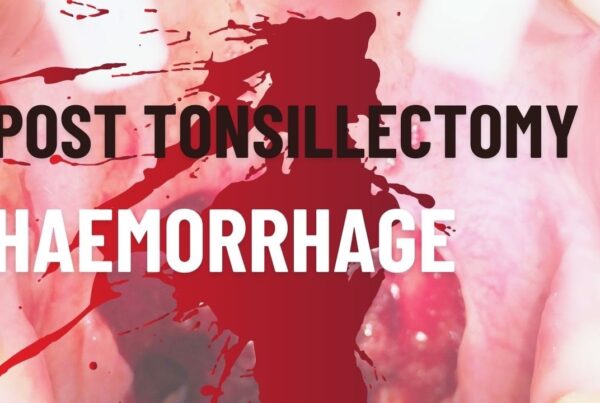Is propofol the new wonder drug for treating headaches?
You know the scenario: a patient comes in with headache for the previous few hours or even days. It’s the same as the patient’s normal migraine, but very severe and won’t go away. What do you do? A bit aspalgin and/or codeine and/or fluid and/or metoclopramide. In many cases you reach for the ‘largactil’, 25mg in a litre of saline and if your patients are like mine, you need another bag of the same. It’s now 2-4 hours down the track and the patient is sleepy and just wants to go home. Sounds familiar?
Well, here is some published evidence for the use of ‘propofol’ in this scenario.
In a paper in 2000 [Headache, 2000, March; 40 [3]: 224-230] Krusz, et. al. initially observed improvement of headache in patients treated with propofol in preparation for epidurals and other nerve blocks. They conducted a study of 77 patients with intractable headaches, both migrainous and non-migrainous in a pain clinic. The results were surprising to say the least. Headache intensity was reduced on average by 95.4% after 20-30 minutes. Sixty-three of the seventy seven patients had total resolution of their headache and only three patients had a return of headache the following day. The average dose of propofol was 110 mg, considered a sub-anaesthetic dose in this group.
Since then, there have been several case reports of the use of propofol for migraine headaches. In the latest case report [Anaesthesiology, February 2007, volume 106, issue 2, page 405-406] propofol was used in a patient with a two-week history of intractable migraine headache that had been complicated by severe hemicranial pain, photophobia and phonobia, and left eyelid droop. The patient has had multiple medications trial with no success. The patient had been admitted and a neurologist at the Anaesthethetics Department was to assist with a sub-anaesthetic dose of propofol.
A visual analogue scale was used to monitor pain. This is what happened:
Initial pain score was 6/10 with photophobia
20 mg of IV propofol was then given every five minutes to a maximum of 120 mgs over 30 minutes.
At five minutes: The pain score was 5/10.
At 20 minutes [80 mg]: The pain score was 2/10
At 30 minutes [120 mg]: The pain score was 0/10 and the photophobia resolved.
In the most recent study [BMC Neurology, 2012; 12[114]] Soleimanpour, et. al. conducted a double blind, randomized trial of 90 adult patients who presented with migraine headache.
The patients were divided into two groups: Group 1 received IV propofol, Group 2 received IV dexamethasone.
The dose of propofol was 10 mg every 5-10 minutes to a total of 80 mg. The dose of dexamethasone was 0.15 mg/kg to 16 mg total.
The reduction in headache score in the propofol group (1.44±1.63) was significantly greater [P<0.05] than the dexamethazone group (3.06±2) at 30 minutes.
The propofol group had a more rapid result and there were no side effects.
Here is my take on this.
Safety comes first. Obviously, make sure that an airway trained person is available if we’re giving propofol to a patient. Make sure the monitoring is in place and all the airway equipment is there and checked and ready to go.
How much propofol would I give: Well I would probably start with 10 mg every five minutes for the first two doses, and then continue with 20 mg for the rest of the doses up to 30 minutes, five minutes apart, to a total of 100 mg. I would be very careful in monitoring blood pressures of the patient( beware in the very old). I am making sure that they would not be anaesthethized or that these are sub-anaesthetic doses.
Propofol for migraine… I’m going to give it a go. Let me know if you use it out there.
Peter Kas











Hi Peter,
Great article, and worth everyone’s thoughts. Personally, I would go for the chlorpromazine 25mg in 1 litre over an hour or two if first line treatment had failed. I would be happy to use propfol with the involvement of a neurologist but aside from the expected risks of apnoea and hypotension, one potential problem is that it works so well that patients start to ask for it. We don’t want to end up like the late Michael Jackson’s physician, sounded like he was badgered into using it, and as we saw, things can go wrong very quickly. The other treatment which has gone out of fashion is the lignocaine infusion. Again something I would be sharing the decision making on. Great subject!
Good points
The only concern that I have with the propofol(given that I use it all the time for sedation) is that it takes a senior person away for 30 minutes. In terms of adverse events, these are sub-anaesthetic doses and no cases of hypotension were reported. I think there’s more of a chance of hypotension with largactil.
I suppose patients asking for it is a concern, but I don’t always give people what they ask for and also, the presentation rate is maybe one patient per day….”Gimme da white stuff”.
I’m not sure, but I cant wait to try it!
Thanks for the comment mate
God forbid a patient asking for something that works.
Hi Peter
My favourite first-line migraine Rx is intra-nasal lignocaine.
It’s evidence-based (RCT in JAMA 1996).
It works fast and is non-sedating.
And unlike propofol, it doesn’t need to take up the time of a resuscitation cubicle (plus the logistics of getting the patient to wait until a resuscitation cubicle is available) and an ED senior doctor plus 1:1 nurse.
Have a colleague that uses propofol for migraines and he swears by it, but I’d consider it as perhaps third-line Rx.
Thanks for that. Never heard of it before today. There’s a blog right there. I’ve got to look that up.
What fascinates me is the way these substances work and the pathophysiology of migraine. It is so complex, we still don’t fully understand what’s going on. Thanks for the input.
No probs, intranasal lignocaine is great!
I’d love to see a ResusTV review when you get a chance to try it on a few patients. It’s such a fantastic migraine treatment modality for ED where you want patients without serious illness to be able to go home quickly.
Seems to work on about 3/4 patients (just my anecdotal estimate, not hard data).
I always check any contraindications, and warn patients about a bad taste/numbness in the back of the throat (due to nasal overflow). So, no hot drinks or crunchy food afterwards until the sensation comes back.
Also, dry-retching for about a minute afterwards is virtually universal. Not pleasant, but if they’re ready with tissues and vomit bag, it wears off quickly.
I have recently gone back to using an atomizer for delivering the lignocaine with patients sitting upright, rather than drizzling it in with patients lying supine (less postnasal drip, so less SEs).
The 5% dose used in the JAMA study is not available in Australia so you can use either 2% straight out of the ampule, or dilute a 10% “xylocard” ampule 1:1 with water for injection.
I’m assuming the 10% solution could be used straight, but I haven’t played with that yet. The volume would be tiny, so loading the dead-space in the atomizer becomes an issue.
I’ve used it for kids, but with reduced doses. I aim for no more than 1mg/kg (given that the max therapeutic lignocaine dose is 3mg/kg).
The pathophysiology theories are pretty rapidly moving – especially with the use of anti-epileptic meds in recent years, and suggestions of aberrant neural conduction complementing the traditional vasospam/vasodilation viewpoint. Will be interesting to see where it ends up!
ketamine 0.3/kg has recently been advocated for migrain.
many migraine patients lose their vascular access because of repeated i.v injections- so im approach is v.practical…also the high safety record of ketamine… I have tried it on my wife ..it worked!
Zsamarrae,
Interesting migraine therapy!
Although I’ve never seen it done in Australia, Ketamine can also be used intranasally, which is a convenient and rapidly absorbed route.
There was a recent study on using low-dose intranasal ketamine for acutely suicidal patients – seems it dramatically improves their dysthymia and suicidality. Beats having to wait hours for the MH triage to come and tell you “nothing wrong with them” and send them home depressed and suicidal still!
But I would expect in Australia that intranasal ketamine’s convenience would be negated a bit by logistic concerns (as for propofol) of having to tie up a resuscitation cubicle, airway skilled doctor, and 1:1 nurse.
Could justify it for the acutely suicidal patients, but not so much for someone who only has migraine, where you could just give them a shot of intranasal lignocaine on the spot.
The use of pethidine for headaches has been – thank goodness – phased out. I don’t want to replace it with either the white stuff or the new Vitamin K. I think my response to a neurologist wanting this would be – fine, you admit to your service to give it – which is my preferred response to patients presenting with a VMO letter “authorising” pethidine.
Lignocaine – good idea, have used for cluster. Note that ocasionally occipital n blocks work for migraine.
Iv chlorpromazine – popular, but it does have its problems, i have now seen 2 patients with BP 60. Remember it is used as an alphablocker infusion for hypotensive anaesthesia! I think that these patients should be monitored and I very much prefer them to have a litre of saline – itself shown to be helpful – first.
Lastly, why don’t many Australian DEMs have sumitriptan (or equivalents) and/or ergot compounds available? Sometimes the reason for presentation is that they are out of the sumitriptan, or used up their supply yesterday – its an authority drug & there’s only 2 or 4 per pack so ……
All very interesting. I have had patchy success with iv chlorpromazine, and some issues with hypotension, associated with repeat doses, in treatment resistant patients. I look forward to giving these a go…..
Dear Pete
Or you could just do a brief sedation, as if you were going to reduce a fracture, although there is no fracture. Keep the patient asleep 10-15 min with titrated doses. You just need to ensure normal safe location and set-up for sedation, as per usual practice.
Thanks
Greg
Hi Greg
I heard you were doing yours that way, rather than titrated doses, just sedate for a few minutes. I’ve tried it and it also works.
I have never seen parecoxib fail to relieve migraine, either IV with a litre of fluid and metoclopramide, or IM if the patient is not too dry. Few contraindications and so far, no adverse effects.
Also good for acute LBP.